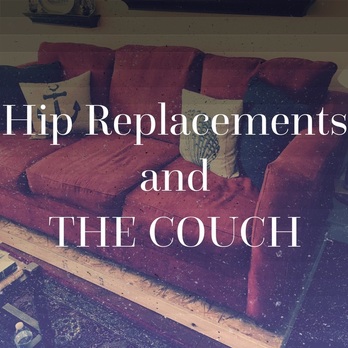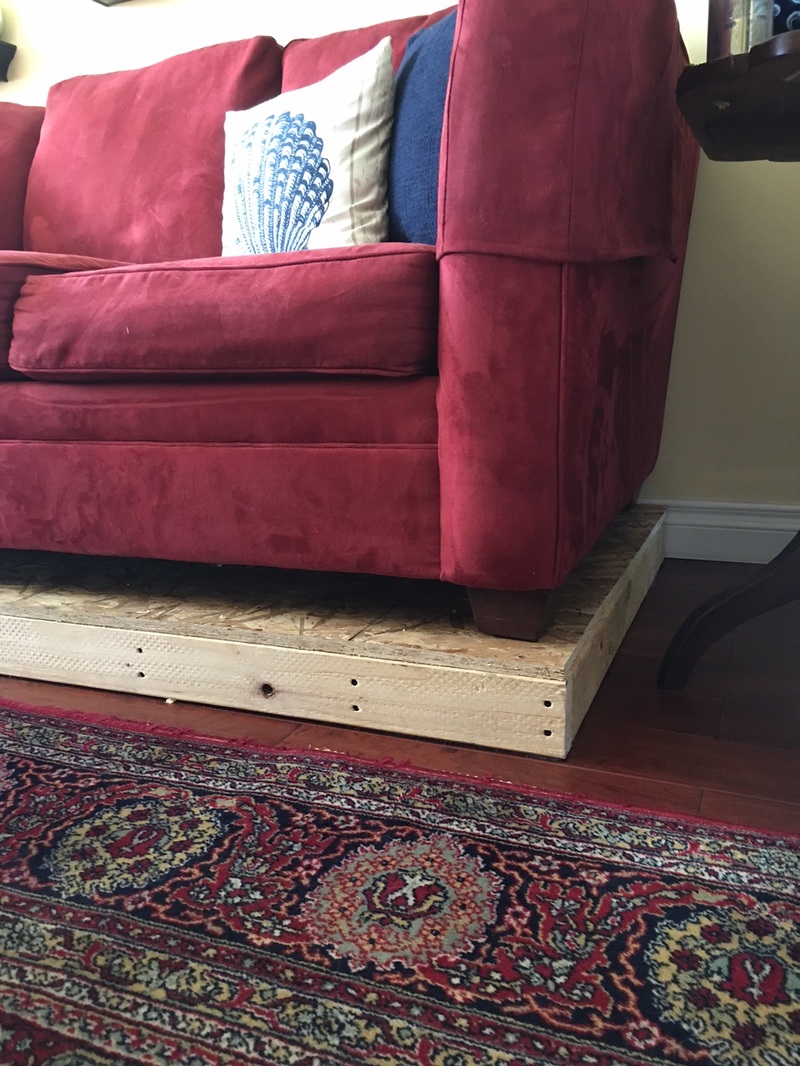A Story of No-Nos and Oh NosA total hip replacement is one of the most common medical procedures we see in home health. Whether caused by falls, arthritis/general joint decline, or for another reason, they are a procedure that occurs quite often. Equally common are the specific challenges that someone who’s undergone a hip replacement faces as they return home. Even something as blase and innocuous as a couch can be a major hurdle to comfort and even safety for a person with a BRAND NEW hip. Why, you ask? Well, let’s get into it: First, there are three big No-Nos post hip surgery. They are called “Contraindications” to the clinician, but in layman’s terms: no-nos will suffice. They are as follows: 1. No pigeon toeing of the feet (no pointing toes inward OR no internal rotation of the femur) 2. No crossing the legs (don’t let the operated leg pass the middle of the body if split in two from left and right OR no adduction of the femur 3. No bending your hip past 90 degrees (don’t let your leg go closer to your belly button than straight in front of you from your hip OR no flexion of femur past 90 degrees) ****Note**** This is assuming a posterior approach surgery. For anterior approach, the contraindications are a little bit different. Also, each doctor can provide specific precautions and contraindications. You’ll notice that the #3 no-no is to not bend the leg past 90 degrees. Well, you say: “That sounds easy enough, I’ll just remember to skip pilates for the next couple weeks.” (Loud buzzer) WRONG! This contraindication is more complex than you might think. We bend past 90 degrees of hip flexion all the time. Here are a few examples: dropped your pen? Reach down to pick it up? Whaaaaaamo, you just broke your hip precautions. Stepped into your tub for a shower? No way jose! You probably just passed the 38th parallel and the invisible line of 90 degrees. Frustrated, you decide to sit down and take a break. WHAAAAAAMO, even that can get you as the seat you sat in was just a little too deep and your formerly comfortable cushy chair just contributed to you breaking your hip precautions yet again. Thankfully, life is good when you have home health occupational and physical therapists there to teach you the tricks of the trade! Here are just a few that we often use. A different approach to picking things up or use of a tool may eliminate the risk. There is a $10-15 tool known as a “reacher” or “long handled reacher” that is extremely useful for picking up dropped items, grabbing things off the top shelf, and especially dressing! (more on this later). When it comes to stepping into the bath over the tub, a simple modified approach of bending the knee and stepping laterally over the tub is all that’s necessary to eliminate or reduce the risk. That being said, statistically, falls occur most frequently in this area of the home, so installing grab bars is often a wise choice. Sitting in the shower is also strongly recommended, for that you have a couple options. There’s the simple shower chair (can be had with or without arm rests and adjustable legs) and there’s the tub bench, both are safe options, but see our post on when to use which. http://www.hackinghomehealth.com/ot/7 Alas, we can’t forget those gosh darn the low chairs. Sometimes a pillow is all that’s needed to elevate the seat angle and make sure the invisible line isn’t crossed. But for the creative or handy there are a couple other solutions. First, there’s the heavy density foam purchasable at upholstery stores. Measuring the dimensions of your chair and then heading to the store for an instant “pick-me-up” is all that’s necessary--sorry for the pun. Simply place the foam block under your couch cushions or preferred chair’s cushion and you’re set! Our second option is to lift the chair itself. This can be done with everything from wooden boards and bricks for the handy, to purchasable chair/bed/couch risers. When all you need is an inch or two, sometimes the foam is better, but when you need a bit more, a little creativity can go a long way in alleviating the discomfort and risk of a low seat. What are your thoughts? How do you solve the problems created by doctor ordered hip precautions?
0 Comments
Leave a Reply. |
Archives
September 2016
Categories
All
|




 RSS Feed
RSS Feed